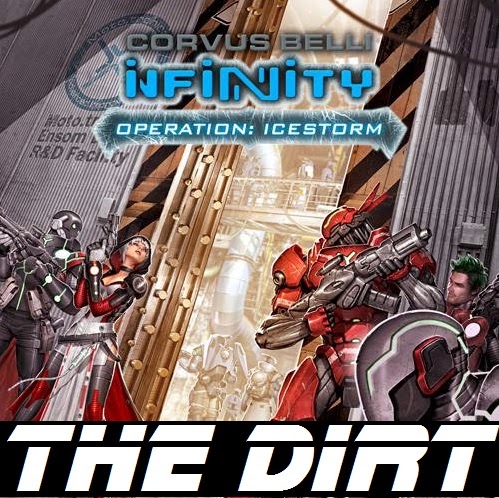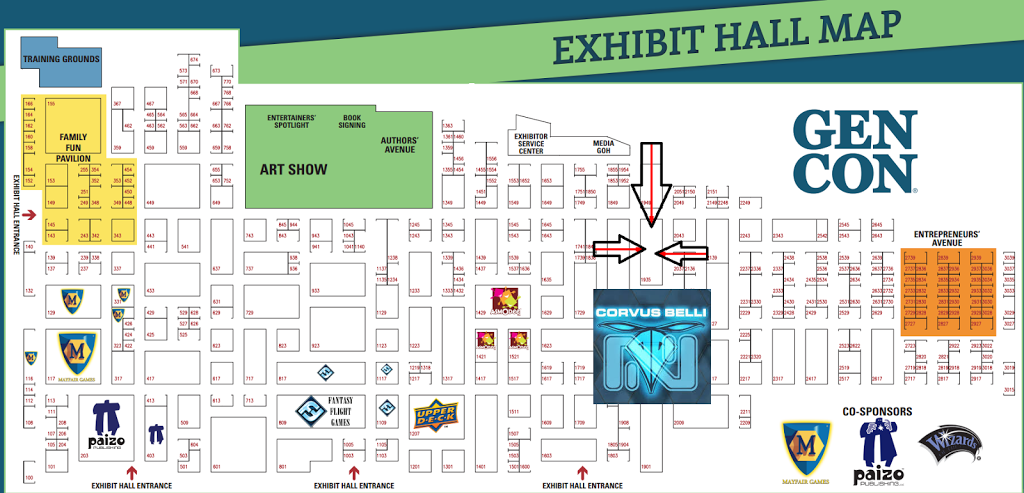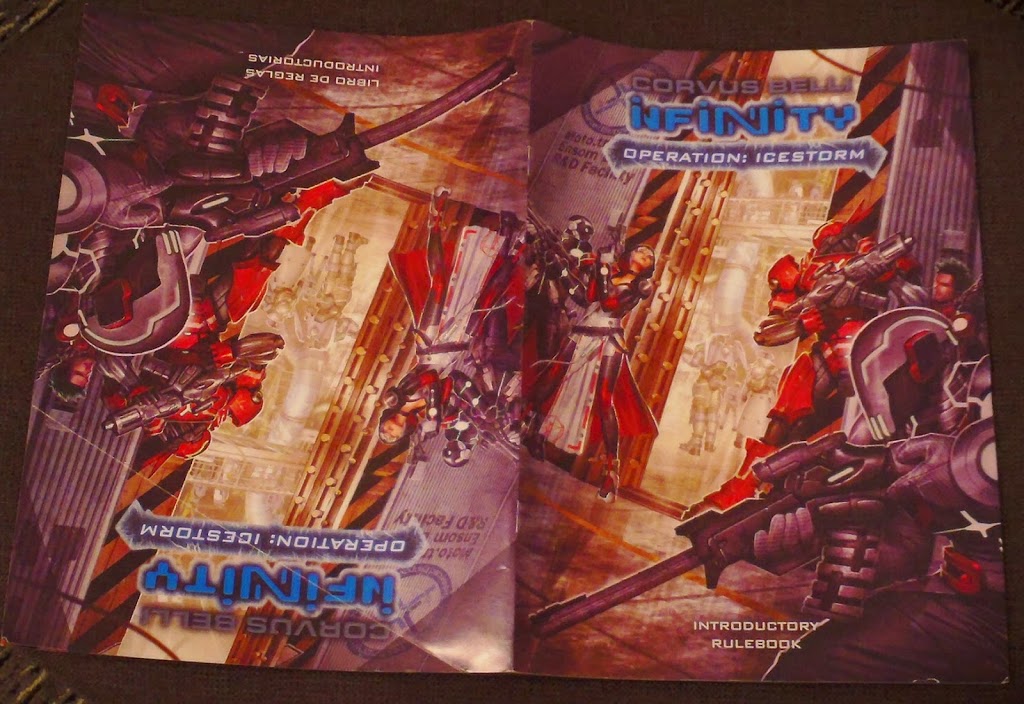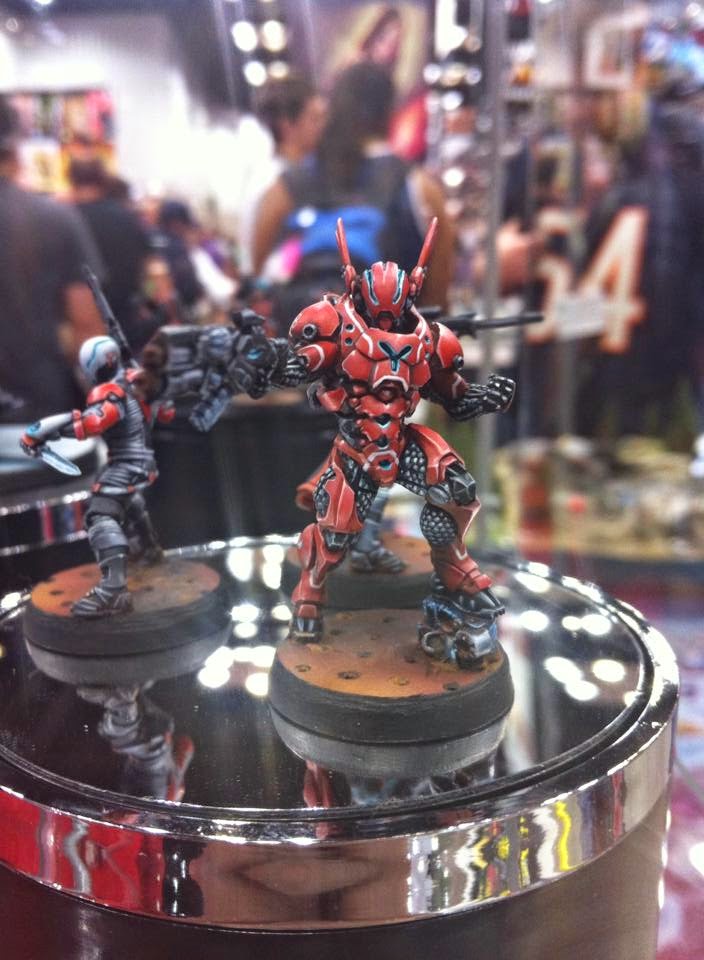(Aug 14, 2014) The DirRT – Operation:Icestorm Introductory Rules
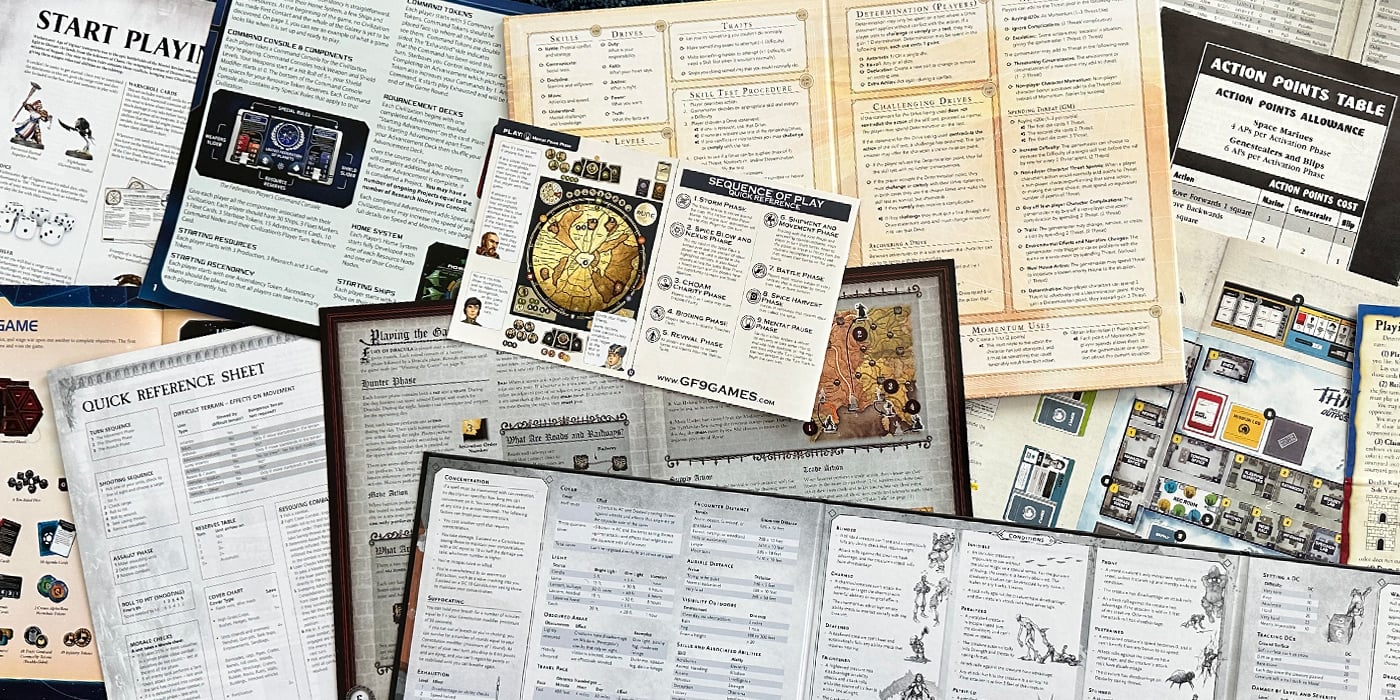
Time to take a look at how 3rd edition is shaping up to make the game easier to learn by how the Introductory Rules are presented in Operation:Icestorm.
I will apologize right now….. this DiRT article is an abbreviation of an article. I’m at GenCon, trying so hard to get this article out but a series of late flights and late work nights had me pressed for time to get this out. If the article appears short. It’s because I had a lot more planned for it, but just have not had the chance to do the media (photos/videos) justice.
By the time this article gets published, I’ll be at the Corvus Belli GenCon booth. So if you’re there as well, drop by the Corvus Belli booth. Everyone I met last year were really nice, and it was great to get some live feedback on any additional content people would like to see. If you’re coming in Infinity Cosplay for GenCon, don’t leave the booth until we talk. Want to know where you can find the Infinity booth, I got a map for you:
Now that the GenCon business is done….
The News – Introductory Rules Overview by Page Count
The Introductory rules consists of two seperate 32 page sections (one in English, one in Spanish).
The two languages are printed upside down from each other so that neither language feels like you’re reading the book backwards (from the back of the book to the front of the book). The 32 pages further break down into:
- 7 pages of fluff and introductions.
- 16 pages of rules interwoven into a set of 5 missions that stair step you from easy to gradually more complicated rules while using more of the models as you continue to the following mission.
- 4 pages of recommendations of what to purchase next for new players
- 2 pages containing a description and overview of the other 6 factions in Infinity
- 3 pages of what books make up the Infinity universe, a little regarding their website, and terrain partners.
The Skinny – Learning Infinity Feels Like Portal
First I want to remove any confusion the Introductory Rule book is not the same as the Quick Start Rules (QSR). The QSR has all of the rules included in the introductory rule book and simply presents them. The Introductory Rules know that you have the Operation:Icestorm models and terrain, and breaks the rules up into bite sized missions with increased complexity. Last week, I posted an article about Infinity Achievements and specifically stated that the table top gaming industry has a lot to learn from the video game industry. While I’m sure the idea behind the missions was only to make the learning process easy for new players, there is a strong analogy between Project:Icestorm and the Valve video game Portal.
For those of you who haven’t played Portal, I’m sure you’ve seen (or can easily find) YouTube footage of the game. At the beginning of the game, it introduces you to the concept of what a portal is. The portals just exist in the room and your character can walk through. As you progress, you receive the portal gun, but you can only use it to create one of the two portals in the room. Slightly further in the game, you can create two. After that, it’s not long until the training is over, and you’re fighting for you life using all the tricks you learned along the way.
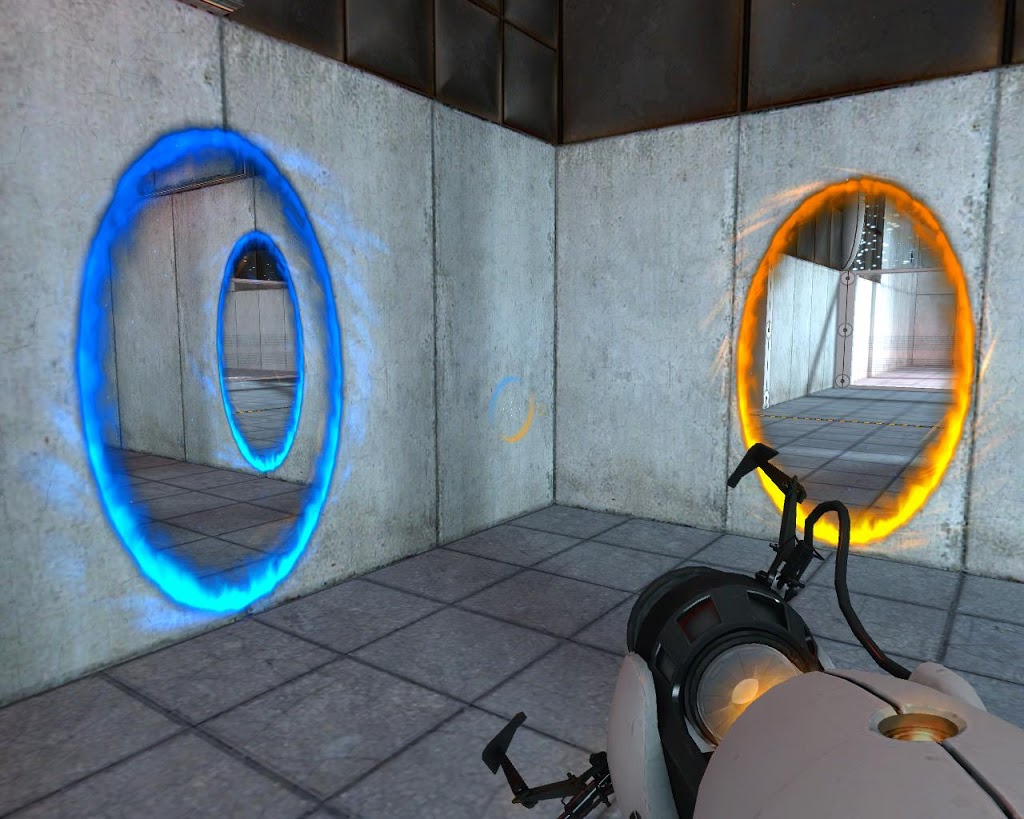 |
| A screen capture of the videogame portal. |
This is how the missions in the Introductory Rules play like. You start off without needing to worry about a Lieutenant. As you progress you add a Lieutenant, then camouflaged units, troops arriving via airborne deployment and so forth. In each successive mission, your core knowledge of Infinity increases until you reach Mission 5, and it’s a free for all using every model that comes in the box.
While that’s fantastic that you’re learning game mechanics, the structure of the mission objective points is in such a way that Corvus Belli is making sure you understand strategies as well. In Mission 2, where a large portion of the available victory points hinge on which side kills the opposing Lieutenant first, players are immediately aware of the critical nature of keeping them alive. And since it has such a heavy weight on the game, it will still force players to learn what it means to lose them.
Here is my run down of each of the missions and what players should be focusing on. If you unfortunately did not get a copy of Operation:Icestorm, the skill tree presented below could be a good road map for you regardless.
Mission 1 – Core mechanics: how AROs work, how models generate orders, how to translate an order into 2 short skills, and the various dice rolls that exist (normal, face-to-face, and armor saves)
Mission 2 – Learn how critical your Lieutenant model is. See what happens when you lose your Lt, namely that your regular orders become irregular orders. The Lt WIP face to face roll. See how your tactics change when you change from choosing Intiative or deployment. Experience an intro mission, who’s objective details start to have an ITS look and feel about them.
Mission 3 – Learn about Camouflage and how the discover skill works. This is a fairly massive change in 3rd edition since you can discover and shoot within the same order. Veterans who have not looked at 3rd edition should be aware that there will be a lot of subtle little changes in how things work that will dramatically alter how their startegies work as well as their understanding of the game. Included in this mission is how combat jumps work.
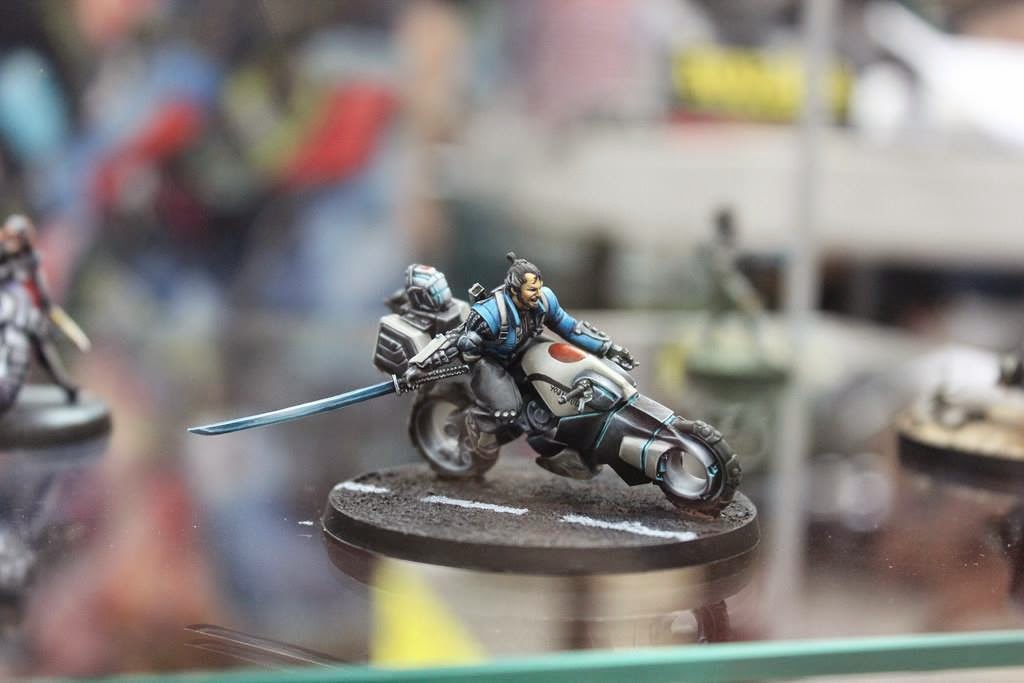 |
| The new Yo Jimbo model (not part of Operation:Icestorm). Added here just because it’s awesome. |
Mission 4 – Learn how mimitism and multispectral visors work in the game. As well as how a sniper can dramatically shut down an opponent from using a particular avenue of approach. Again, veterans should be aware of the dramatic change in distance modifiers that will exist in 3rd edition for sniper units.
Mission 5 – Final battle adding everything that you’ve learn. This game with advance mission details and including the doctor and Kinematika will feel very close to being a 200 point game.
The DiRT – Alternate lists for Operation:Icestorm
I want to finish this article by discussing suggested next models in the book. For PanOceania, the book recommends a box of Auxilias and a Jotums TAG. For Nomads they suggest Tungska Interventors and an Iguana TAG. These are great choices for three big reasons:
- It completes the 10 order limit for Order Groups so new players don’t have to start keeping track of order pools (note the “S”, because I mean multiple).
- It keeps the feel of both the PanOceania and Nomad factions feeling very similar.
- Corvus Belli has informed us (via the Introductory Rules Book) what the model cost changes will be for these models between 2nd and 3rd edition.
- ITS 2015 will be similar to ITS 2014 with regards to specialist troops.
- I will be using 2nd edition point costs for models not existing in O:I.
- I will not be making assumptions about sectorial armies that do not currently exist (I’m looking at you Tungska)
Reasons you might want to stick with the suggested nomad list: I got a chance to overhear just a tiny bit of how hacking will be used in 3rd edition. Not enough to provide you an real details. But Interventors are going to be amazing.
Next week we’ll look at the other options for Panoceania.
A huge thank you needs to go out to Cervantes3773. Without his photographs, this article would have looked incredibly bare.
So that’s the news, the skinny, the DIRT on Operation:Icestorm Introductory Rule book. Leave me your thoughts below on what you’d like to see next. As always find me here, my YouTube Channel, or drop me a line or Infinity photos at my email address [email protected] .

